Carly Garzon Vargas

Projects
Open MFA Digital Residency
Fall 2017—Spring 2020
Digital Residents
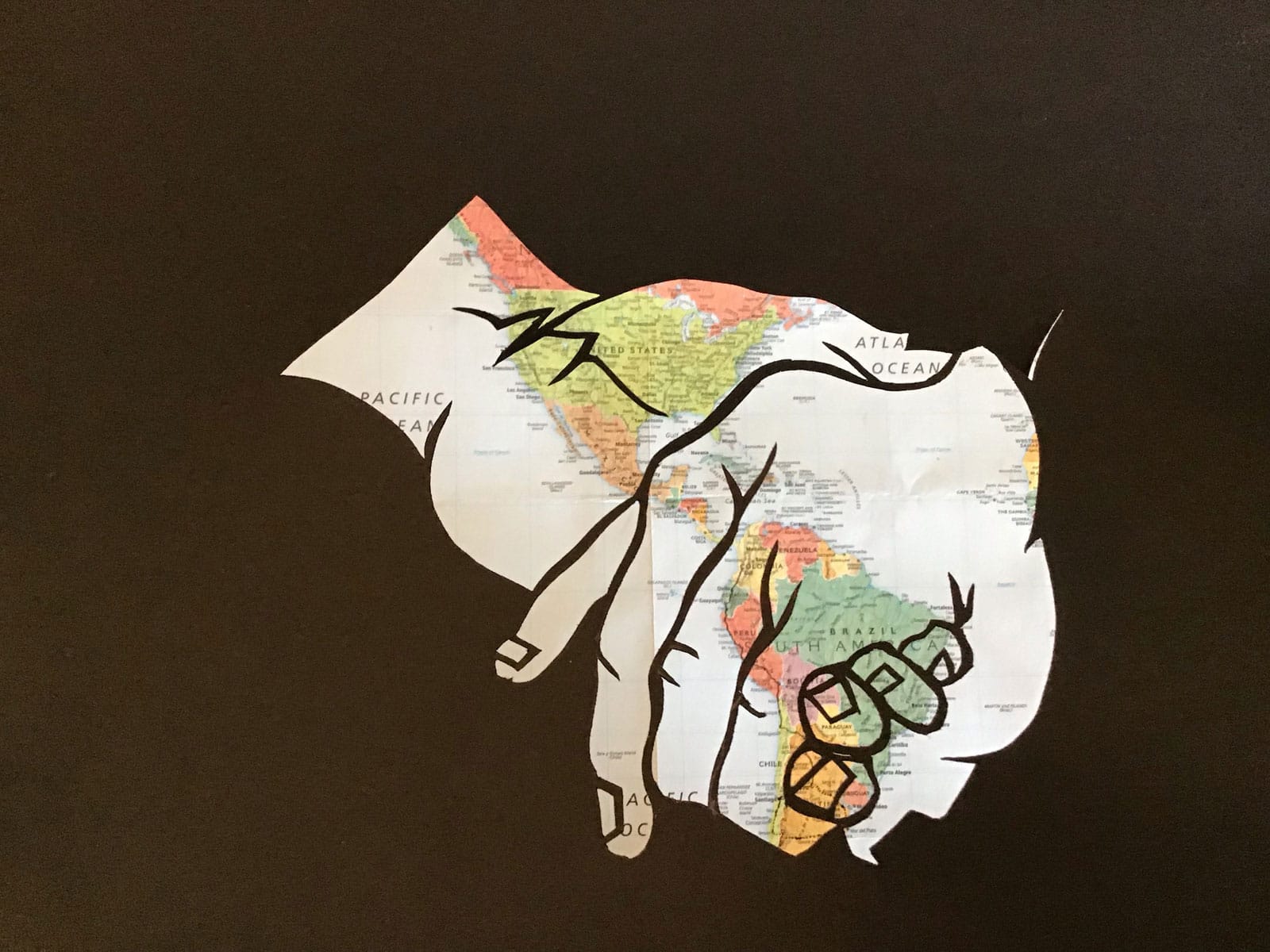
Carly Garzon Vargas
Carly Garzon Vargas is an artist based in Sisters, OR. She studied Anthropology and Spanish Literature at the University of Oregon, and lived in Cali, Colombia where she completed her graduate studies in International Humanitarian Law, Human Rights and Culture of Peace. She is a self-taught in her artistic discipline and uses visual arts as a way to engage with the community. She facilitates community based art workshops for youth, writes bilingual children’s books, creates public art, and shares her work through free shows in public spaces.
Carly explores the intersection between art, culture, identity and community. “Paper-cut is the medium I am most focused on in my artistic practice. I create the outlines of my images by cutting away at one continuous sheet of paper to create the image. I hand-dye paper with a wet on wet technique and layer it behind the outline. This process transforms a simple piece of paper into something unique and delicate. I use this technique to represent the connection between viewer and subject and the precarious dance of recognizing ourselves reflected in the experience of the other. With this technique as a base, I am working in mediums including metal cut and mural painting. Through my art practice I strive to connect with and build community through visual art.”
During her Digital Residency, Carly explored the tension between diversity and belonging. Living in diverse communities and working in diverse teams, how do we cultivate a feeling of self and community next door to someone we perceive as different? “What is the process of “othering”? What does “othering” and dehumanizing look like? In that same line of thinking, can there be such a thing as “saming”, “in-commoning”. Would that be the same as acceptance or assimilation? How do we decide which group we are in? What happens when someone chooses for us? Who am I alone and who am I in a collective setting? Is it different? I will be working with these questions in mind in order to create a visual representation of my answers through the medium of paper cut.”⠀
Website / Instagram
Carly explores the intersection between art, culture, identity and community. “Paper-cut is the medium I am most focused on in my artistic practice. I create the outlines of my images by cutting away at one continuous sheet of paper to create the image. I hand-dye paper with a wet on wet technique and layer it behind the outline. This process transforms a simple piece of paper into something unique and delicate. I use this technique to represent the connection between viewer and subject and the precarious dance of recognizing ourselves reflected in the experience of the other. With this technique as a base, I am working in mediums including metal cut and mural painting. Through my art practice I strive to connect with and build community through visual art.”
During her Digital Residency, Carly explored the tension between diversity and belonging. Living in diverse communities and working in diverse teams, how do we cultivate a feeling of self and community next door to someone we perceive as different? “What is the process of “othering”? What does “othering” and dehumanizing look like? In that same line of thinking, can there be such a thing as “saming”, “in-commoning”. Would that be the same as acceptance or assimilation? How do we decide which group we are in? What happens when someone chooses for us? Who am I alone and who am I in a collective setting? Is it different? I will be working with these questions in mind in order to create a visual representation of my answers through the medium of paper cut.”⠀
Website / Instagram
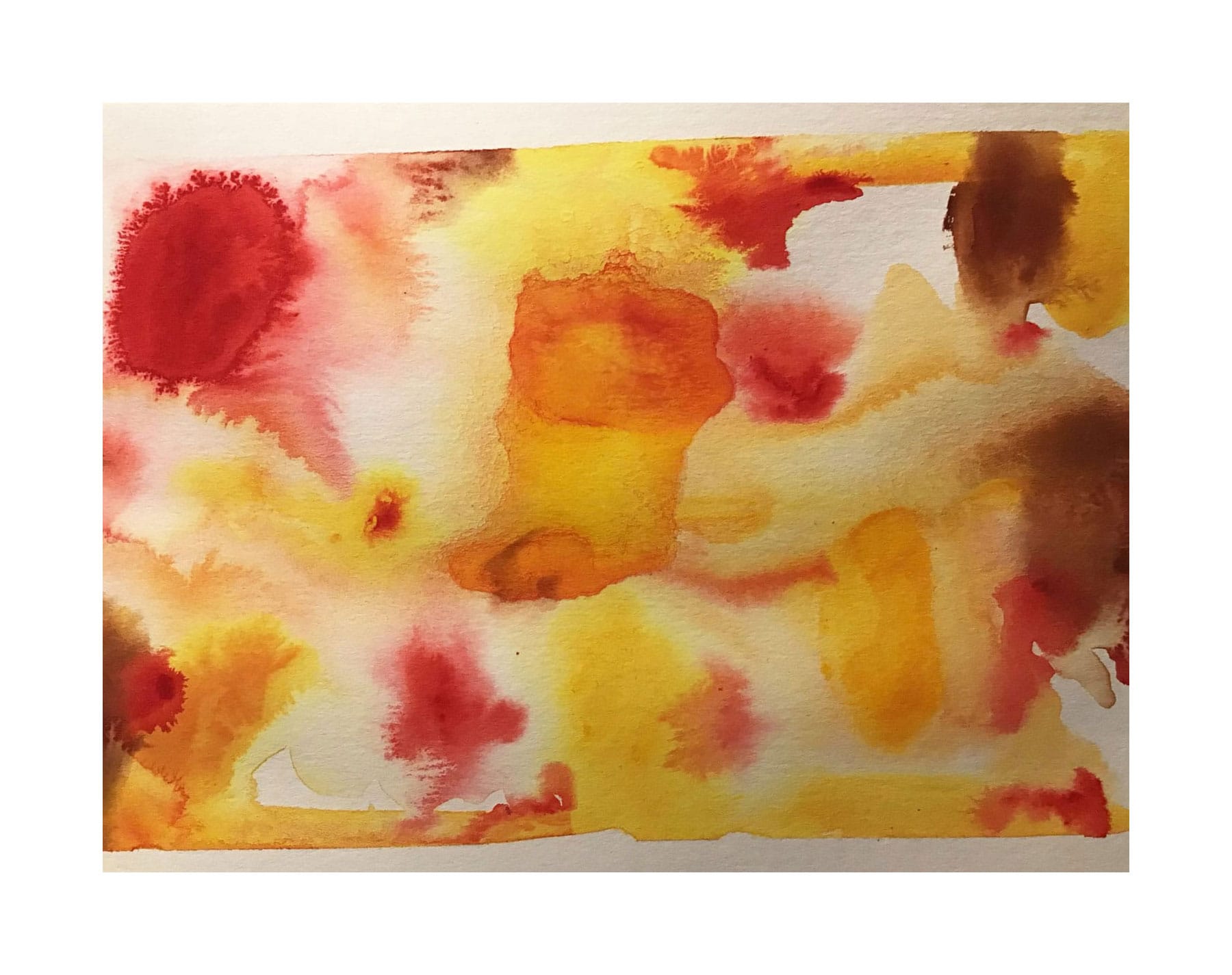
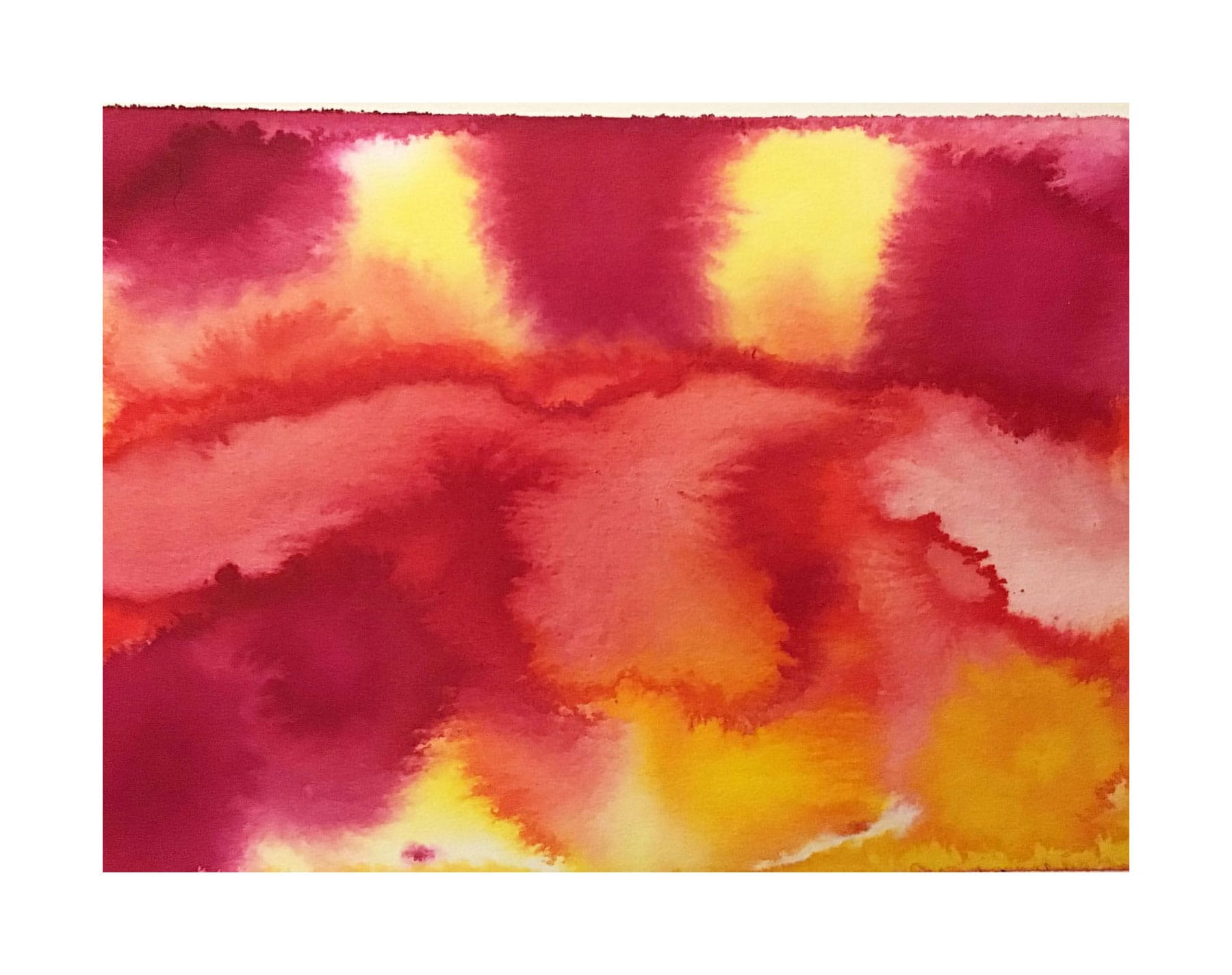
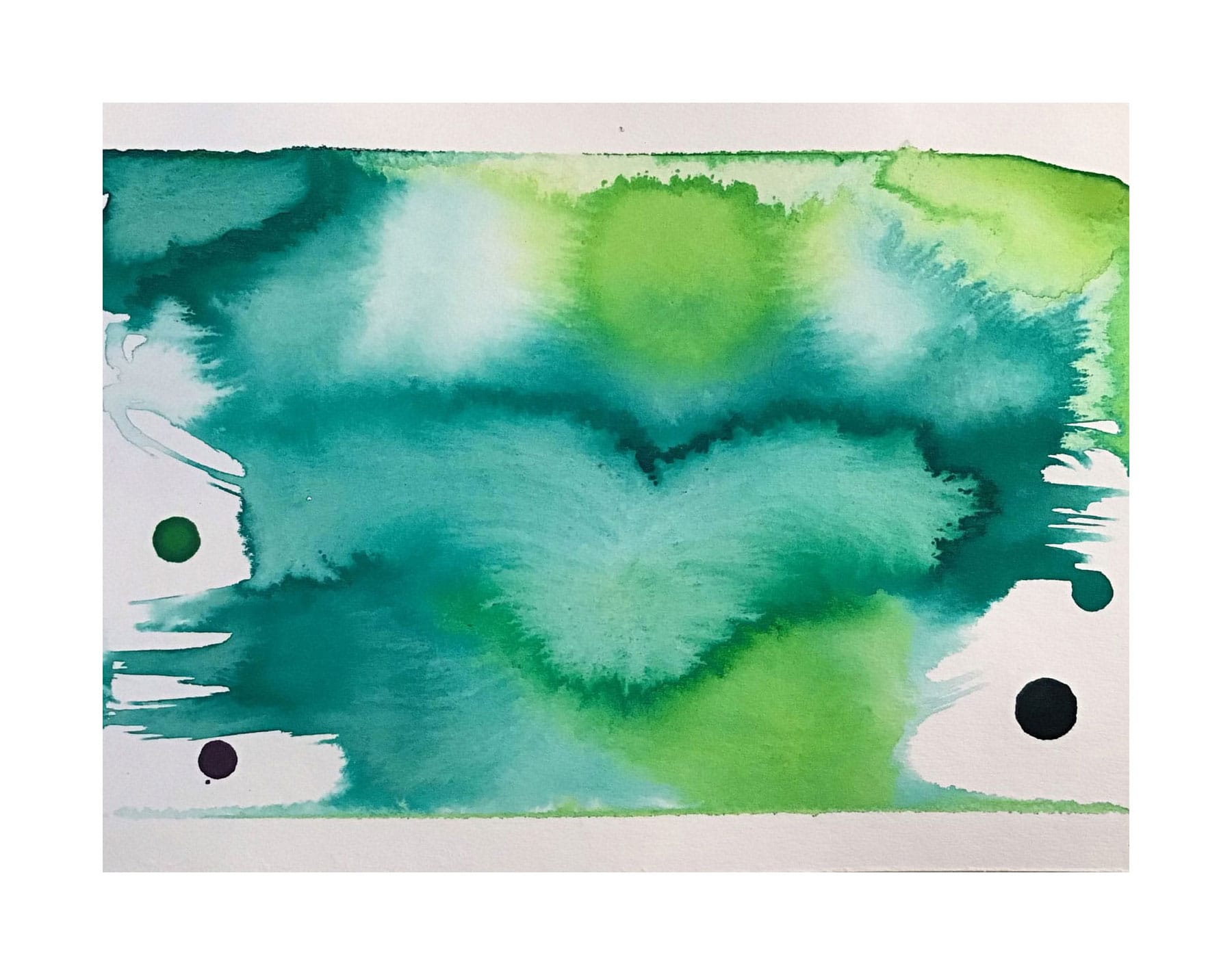

"Incorporation: The first set of papers was created using a wet on wet technique. I tape down and wet an entire piece of watercolor paper to prevent warping, then added drops of vibrant ink to varying saturation. Next, I added more water to manipulate the path of the drops to create pattern and movement. In this series the self or the individual drops lose their integrity of the individual to contribute to the “stream” of the other drops of in and water. In some pieces there is a mixing of different colors to create new colors, which creates a parallel to the value and effect of diversity with in a community. In this representation the individual (the drop) yields to the larger movement to find a place within the whole. By the end of this series, I began to add in gauche paints, which led to the technique used in the next set of papers."
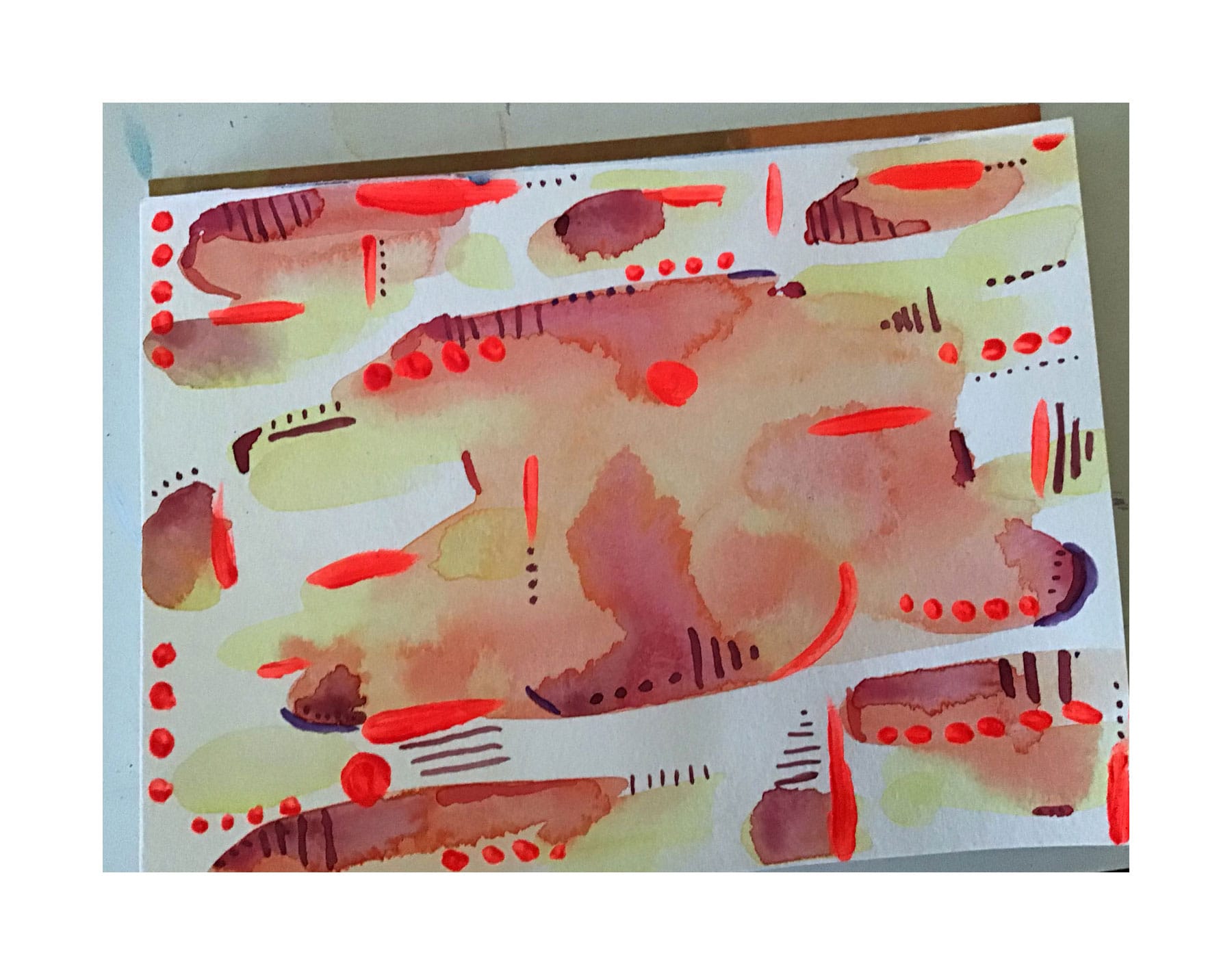
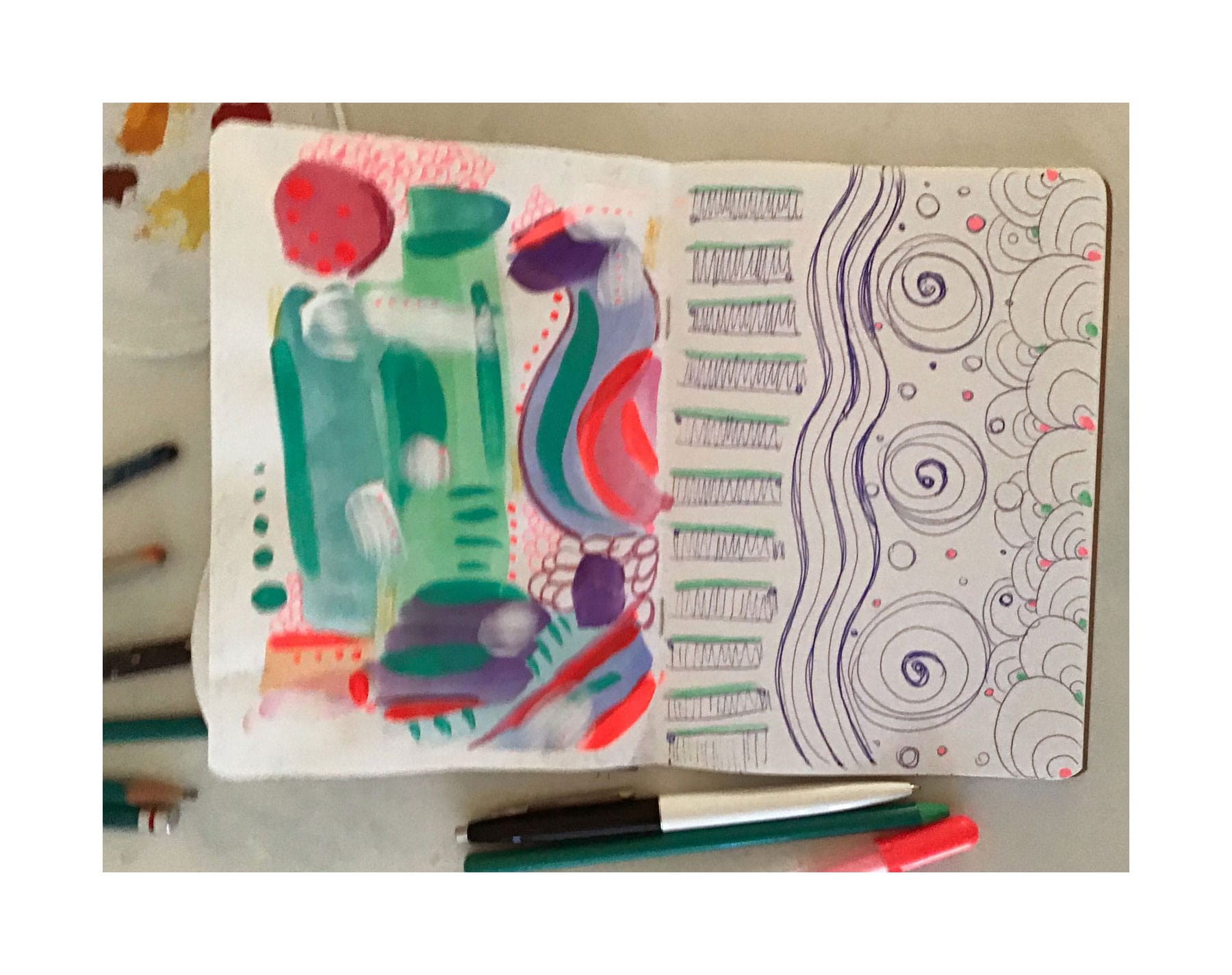
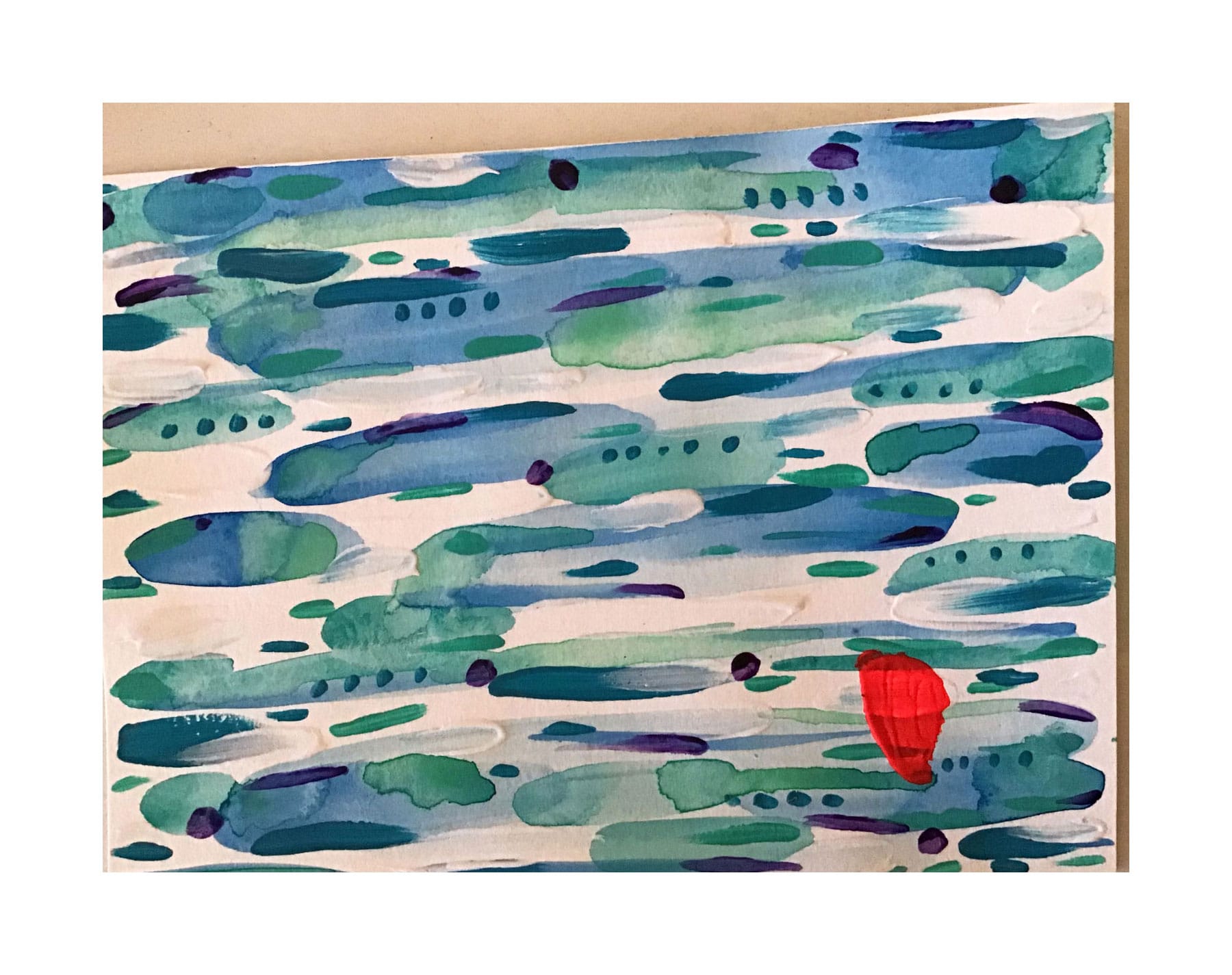
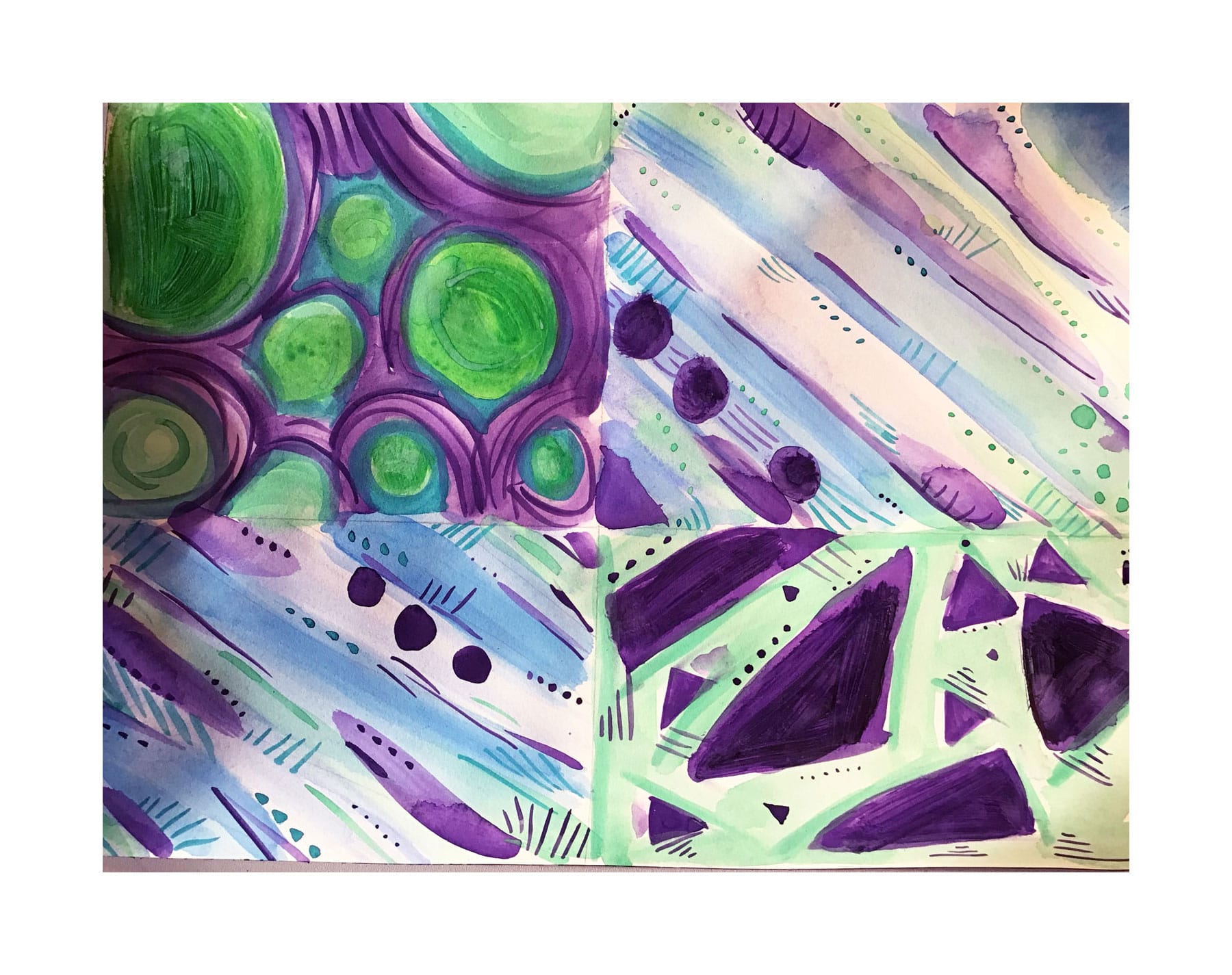
"Syncretism: In this series papers are made from mixed media; wet on wet watercolor, acrylic and pen. In this series patterns and media are repeated layered, taking elements from neighboring patterns to add to their own flow and building on them to create something new. The papers were made over multiple days, giving one layer the chance to settle before adding another element. It reminds me of syncretic cultural rituals that are made from a composite of previous norms over time to create something new. In some cases, the patterns interrupt each other and appear to be at odds. There are outliers and disruption but each individual shape takes up it own unique space in order to create a new rhythm for the larger piece."
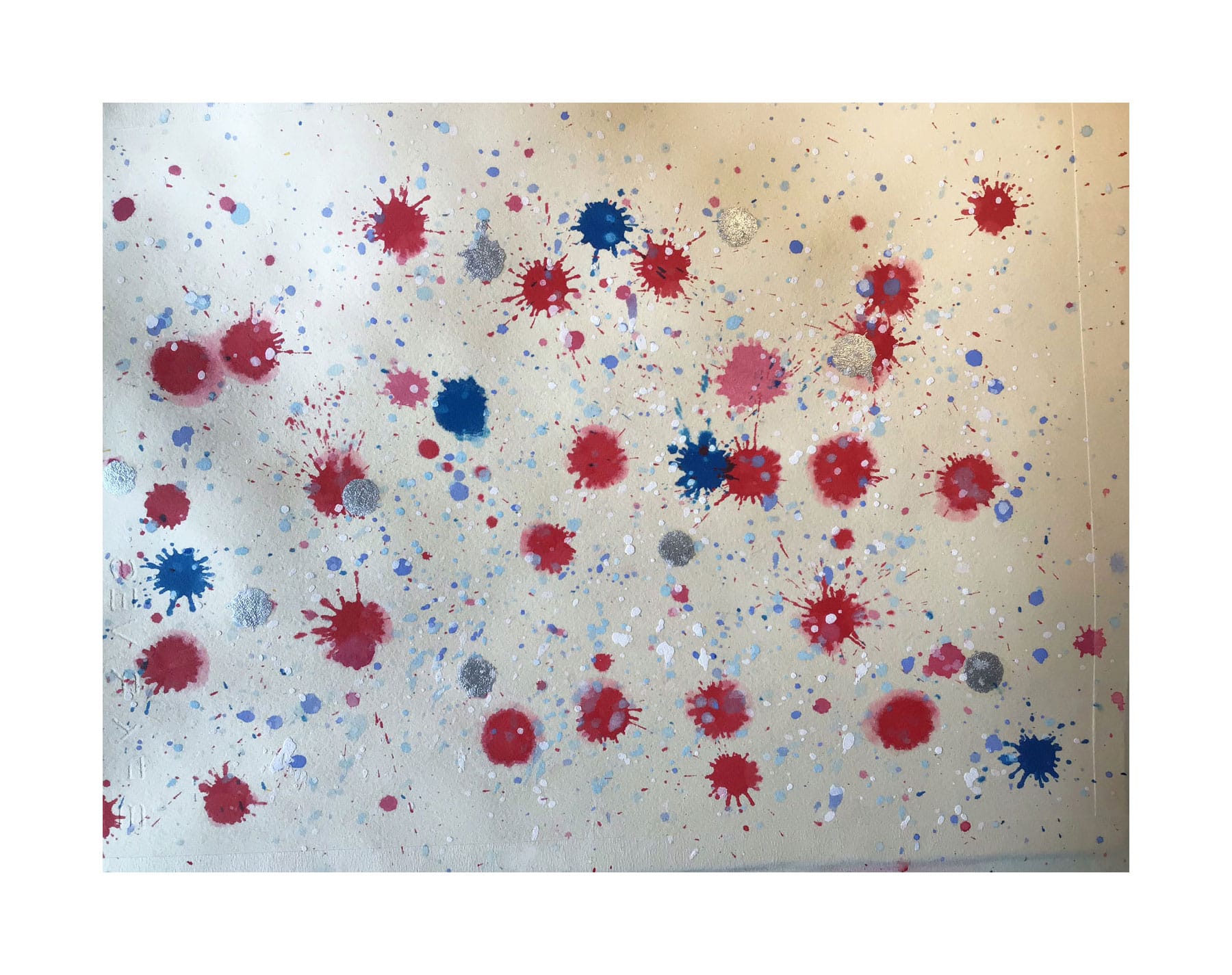
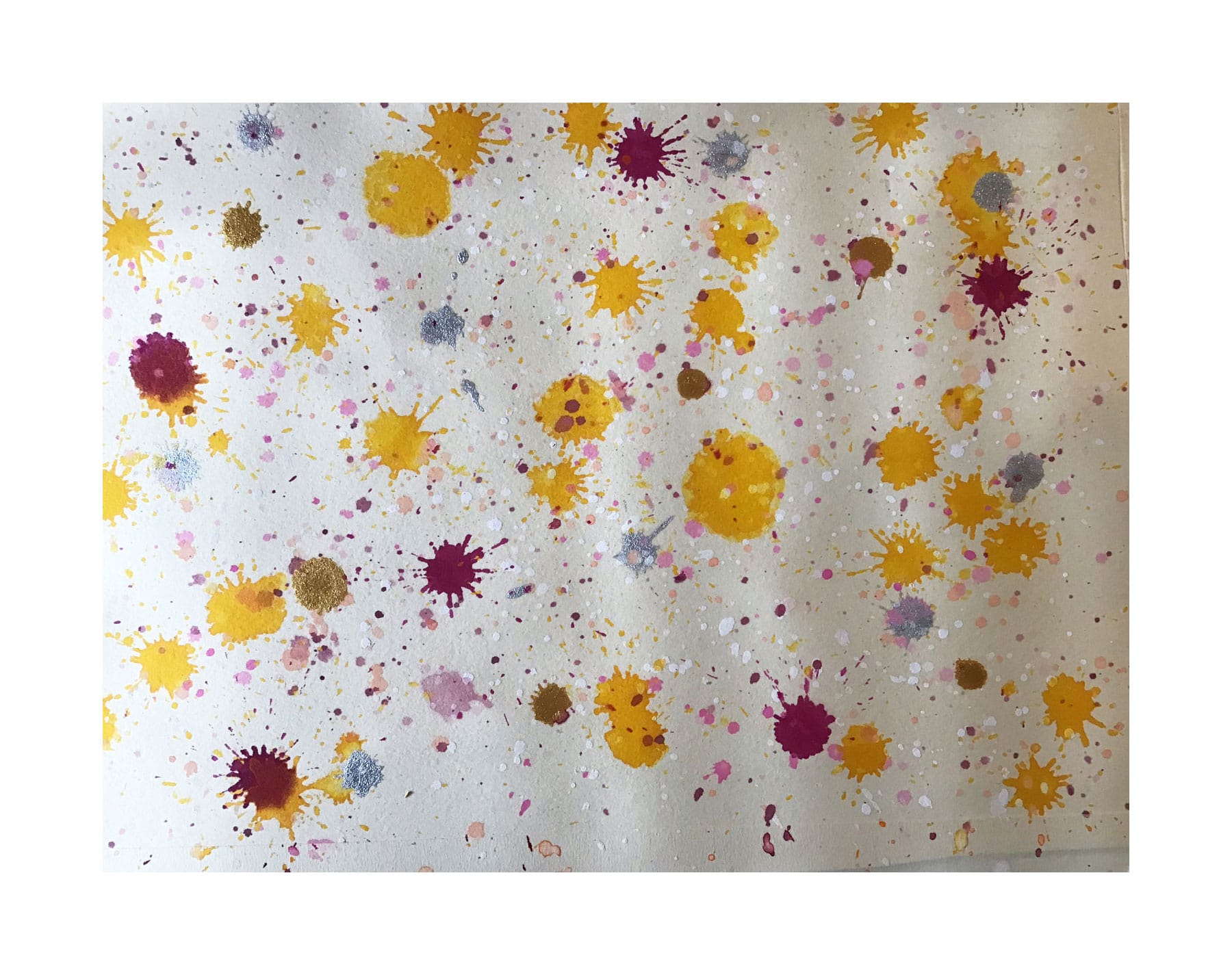
"Individualization: For this series of papers I used the same materials from the previous series, but on dry paper, all during one session. The inks and paints did not flow but instead crashed into the paper and fully maintained their individual color and value. There is limited mixing, the interaction of the colors is limited to overlapping. They appear together in community without taking on elements of their neighbors. The drops smash into the page and run into each other, competing for canvas space. This creates a feeling of chaos and anxiety."

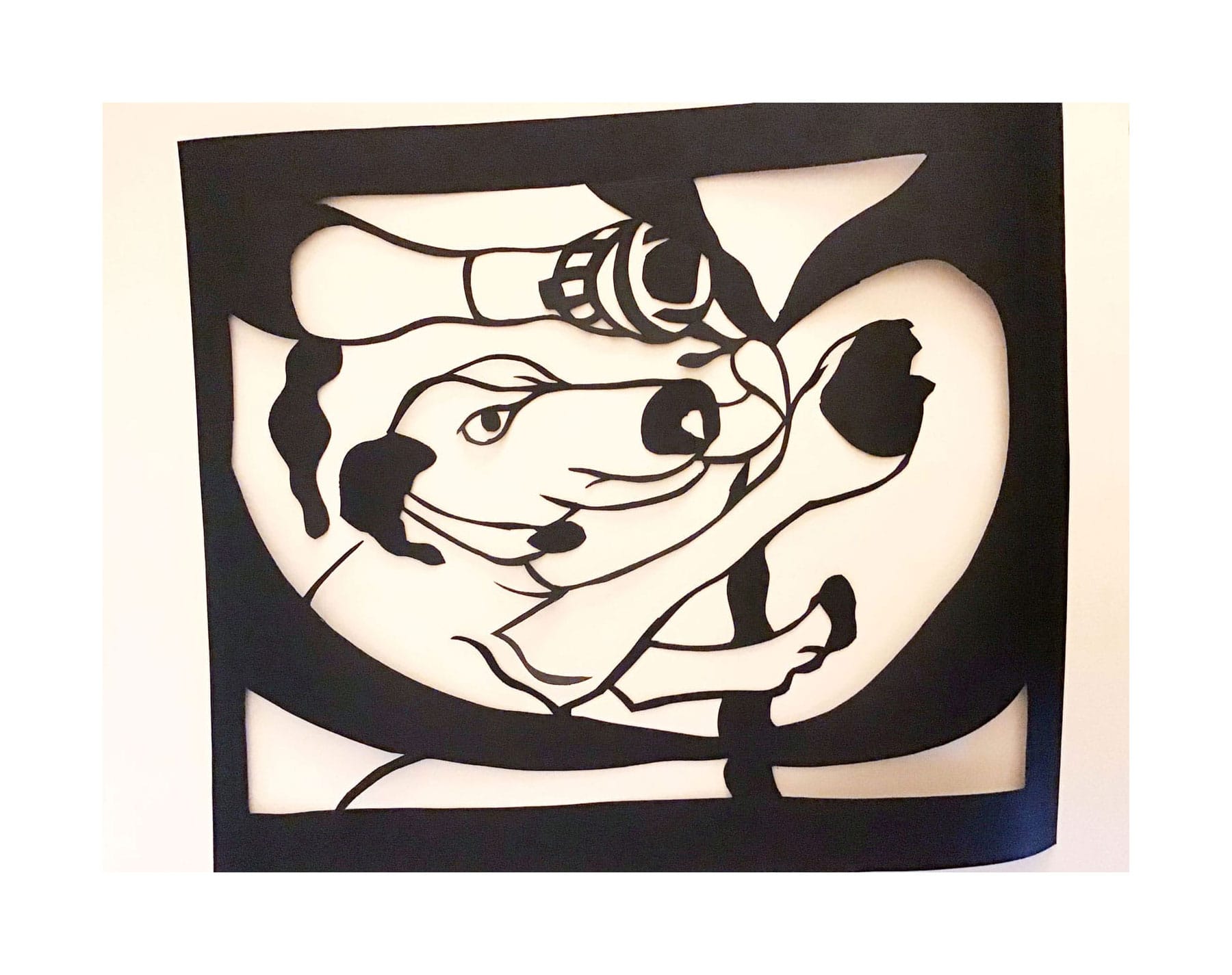
"For the second week I shift gears from the abstract to the very specific and precise exercise of creating and image through an outline. This process begins with sketches and experimentation leading to a final piece. I began by playing with a community of geometric shapes. Intermingled, exploring patterns similar to the paper dying series. Still thinking about individual and community in the back of my mind but opening up to play and refinement of the paper cutting technique. I played with images of play and interconnectedness, including the dog runner and playing perspective and inviting curiosity to my practice."
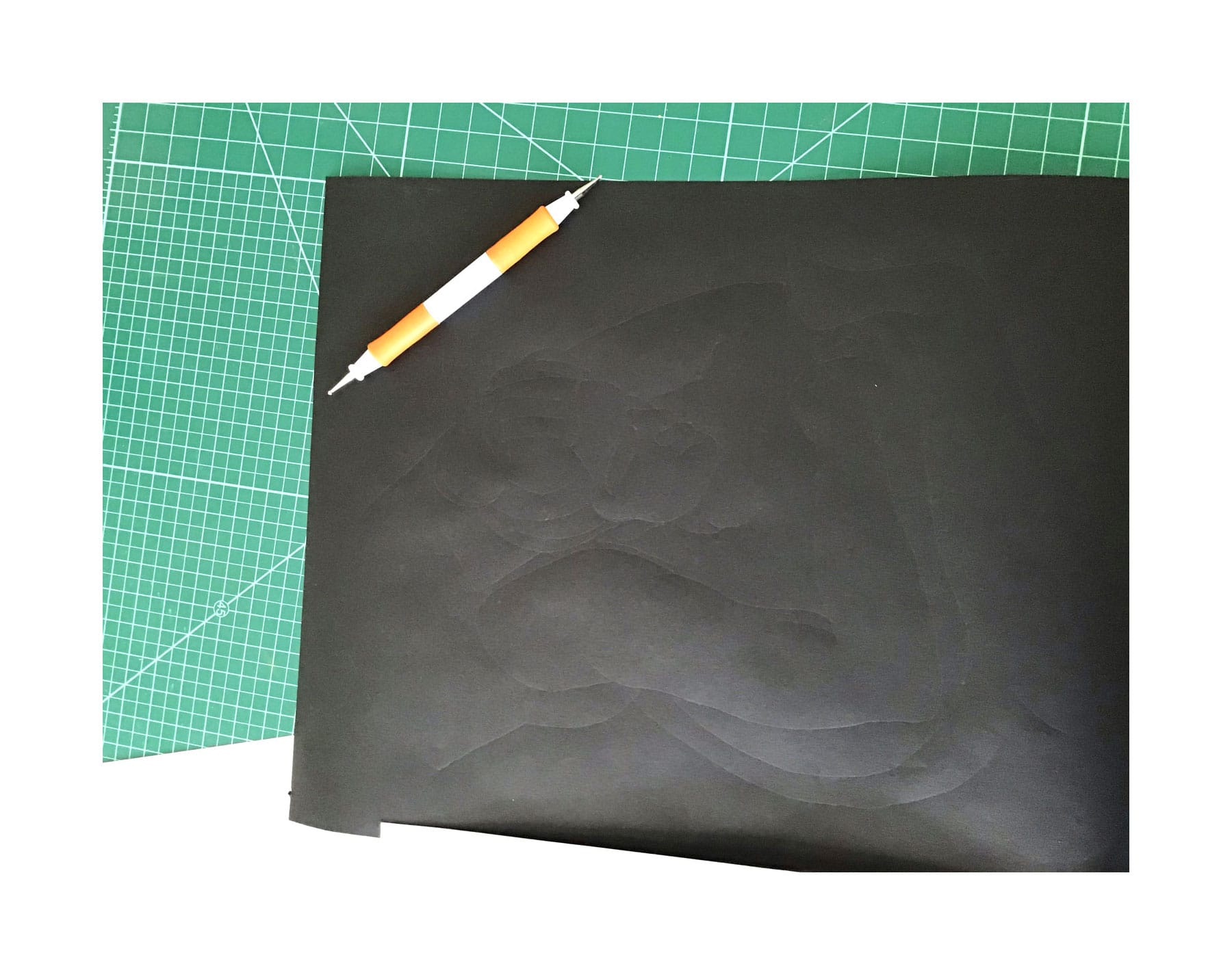
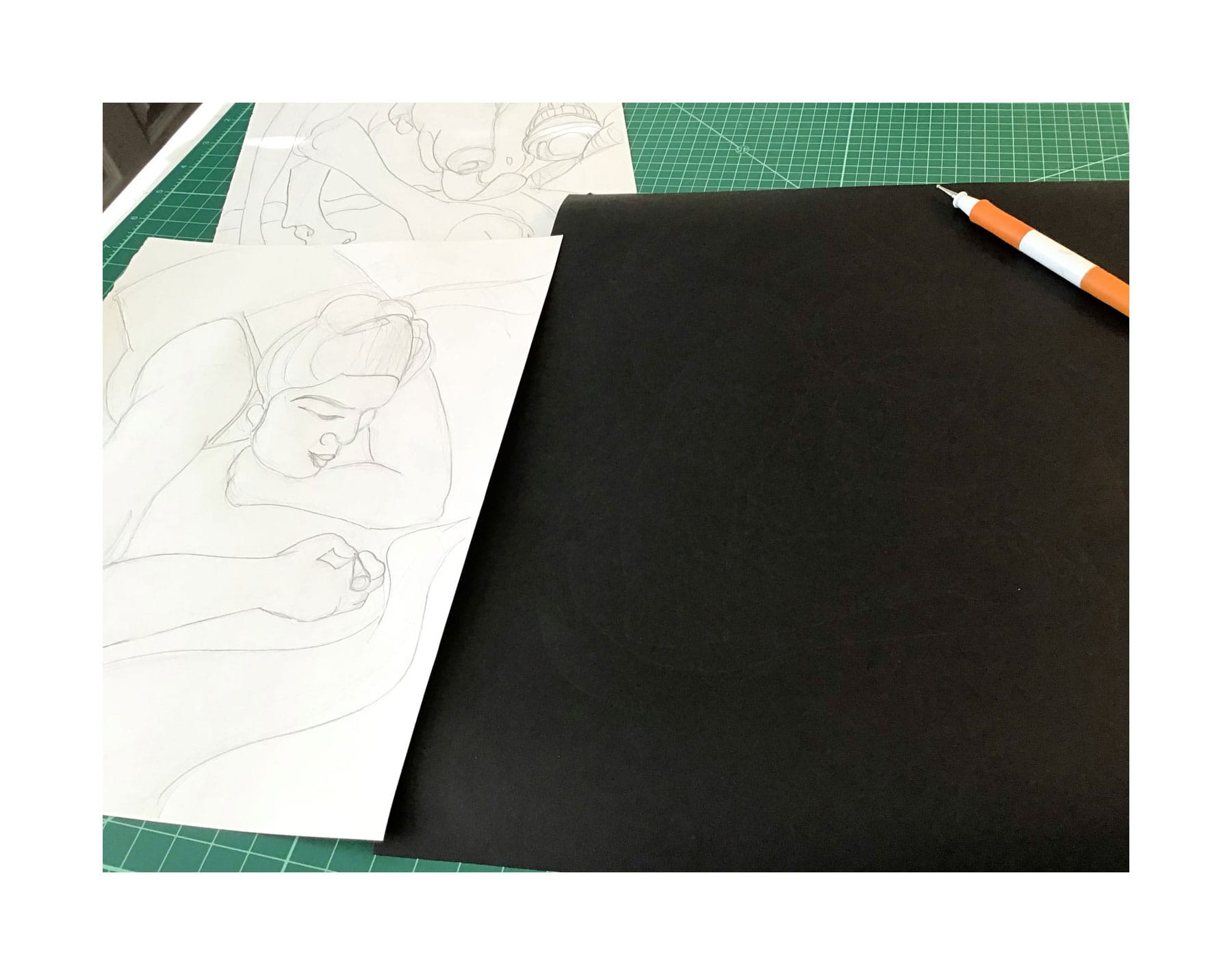
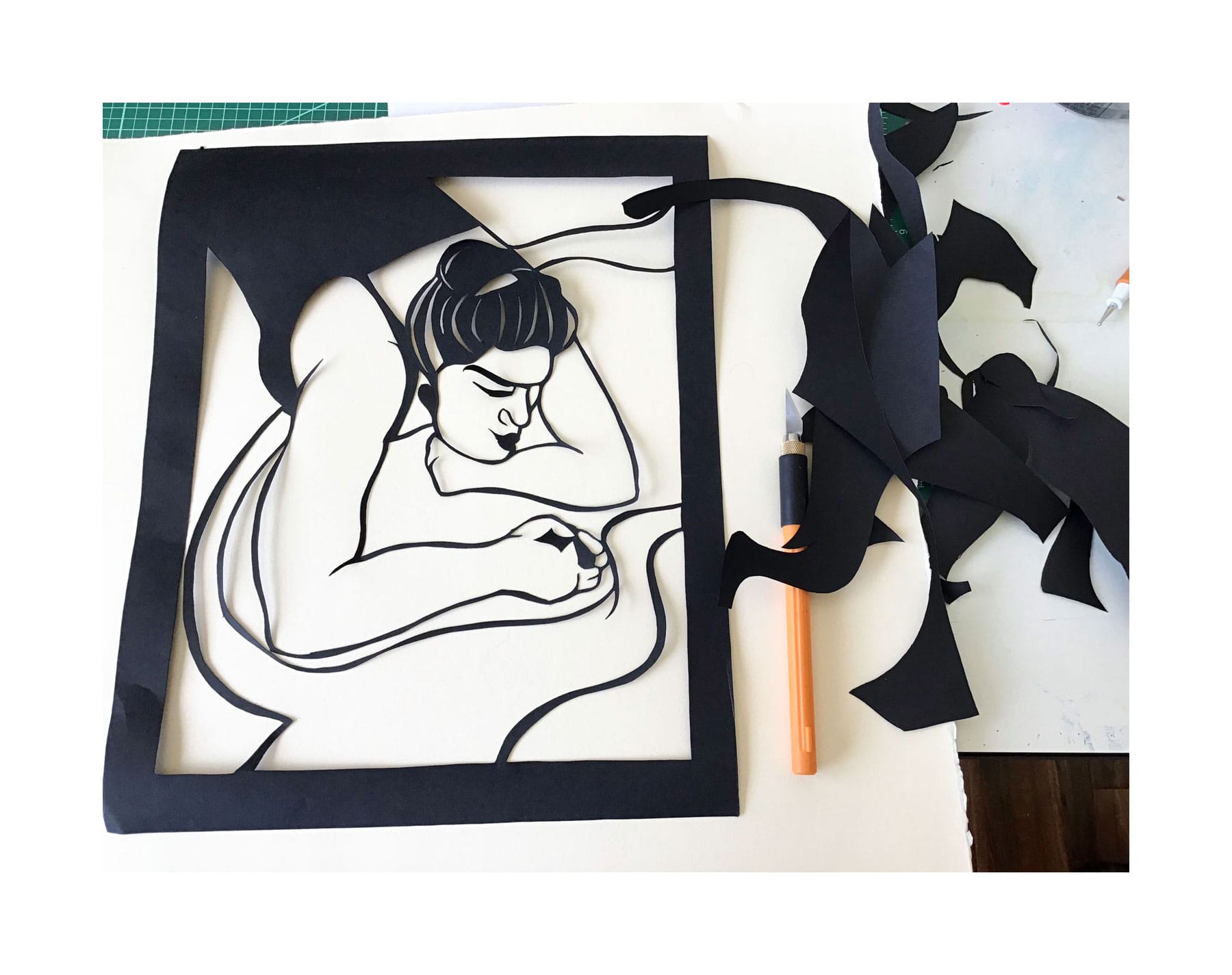
"The process of paper cutting for me begins with the sketch. Next, I use a quilting tool to score the black paper and the spontaneity arises in the next step of cutting
away piece by piece to create an outline from one connected piece of paper. This art form relies on joints and delicate connections, a compromise between long strokes
and small incisions. In the same way that one single person can be an intergral part of a family or a neighborhood or a community; in this art for a small fragment of
paper often supports a large part of the whole piece."
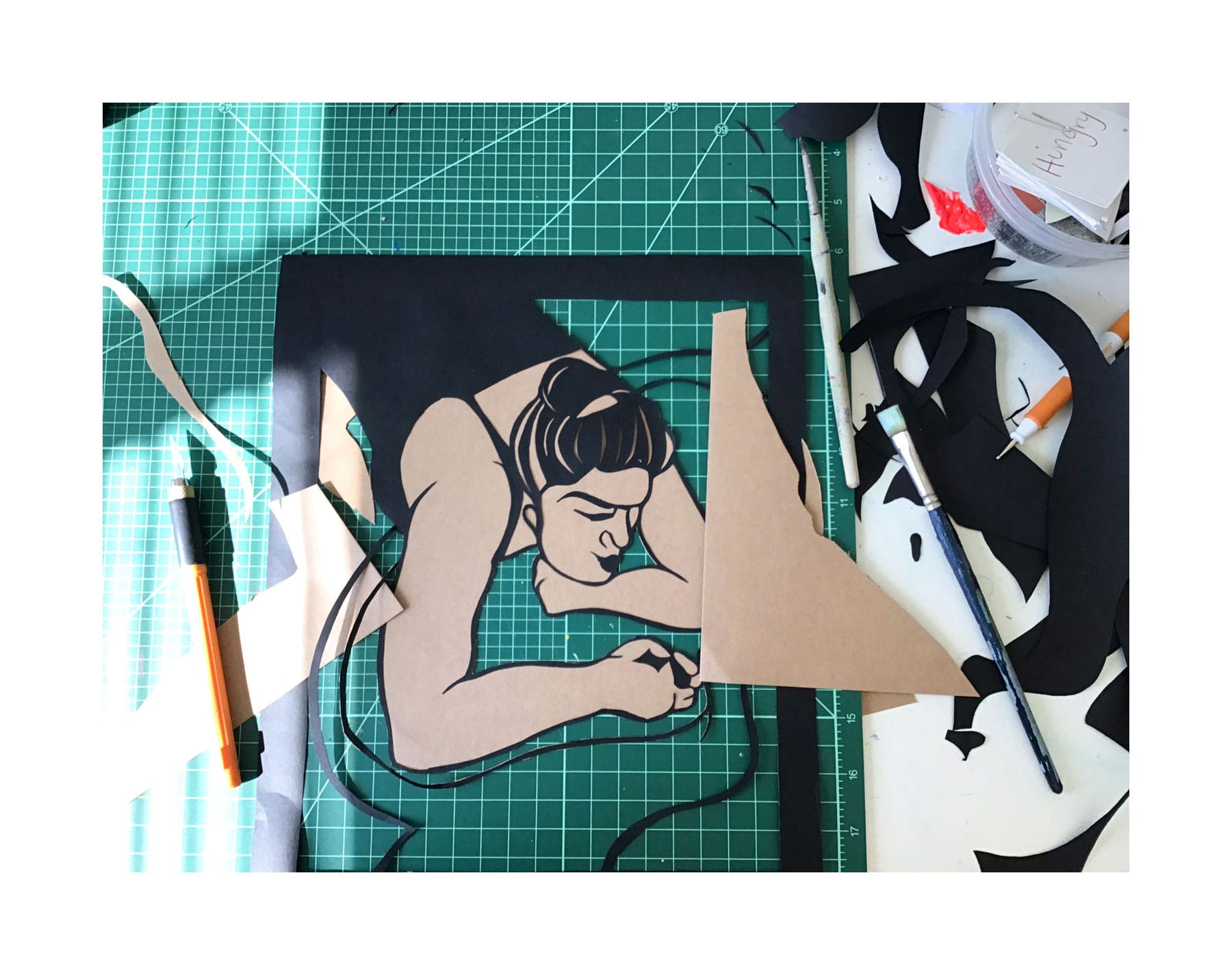
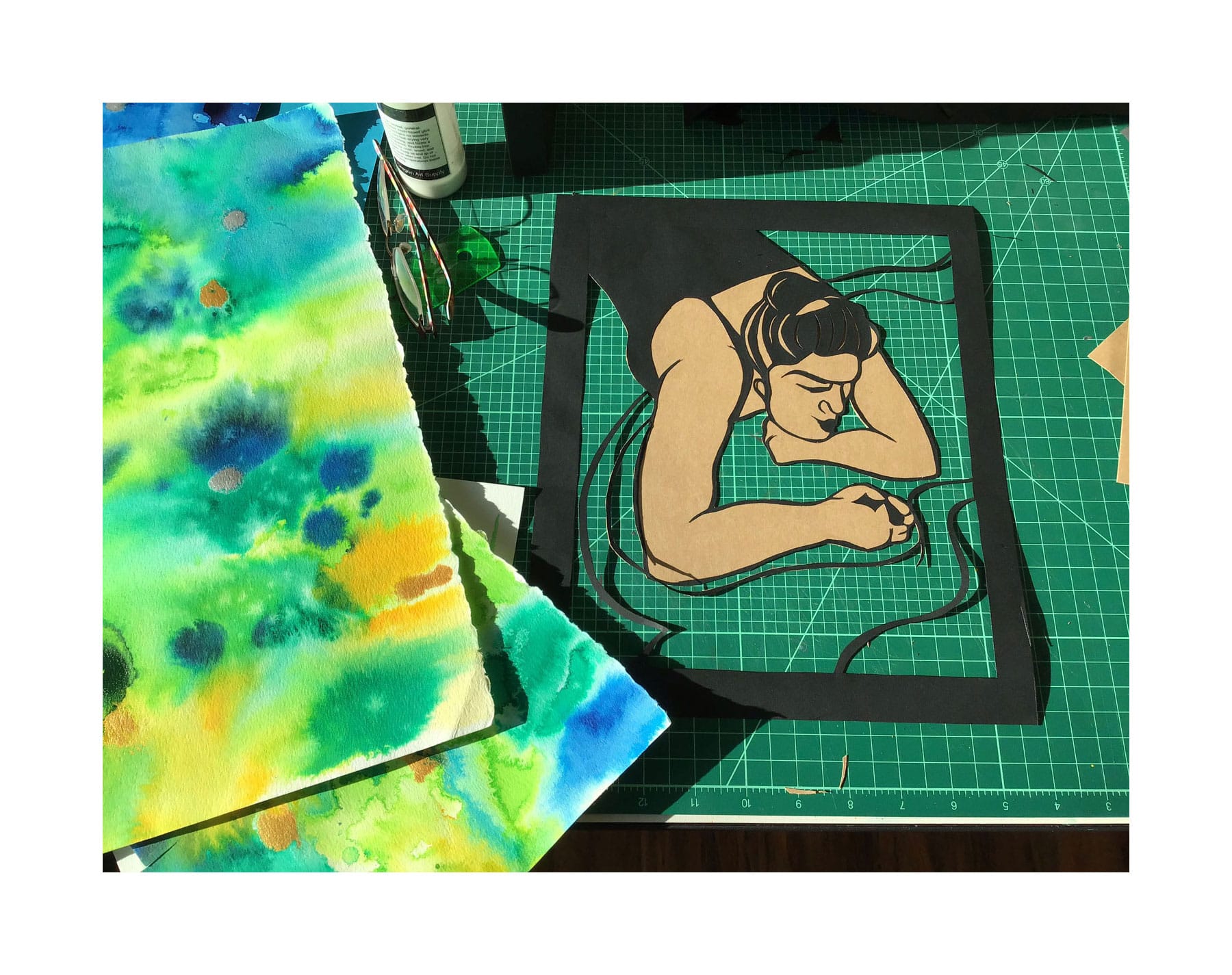
"Next, I glue layers of paper behind the outline in order to create depth and emotion. I begin with the most detailed layer and continue from there. This step is also a puzzle."
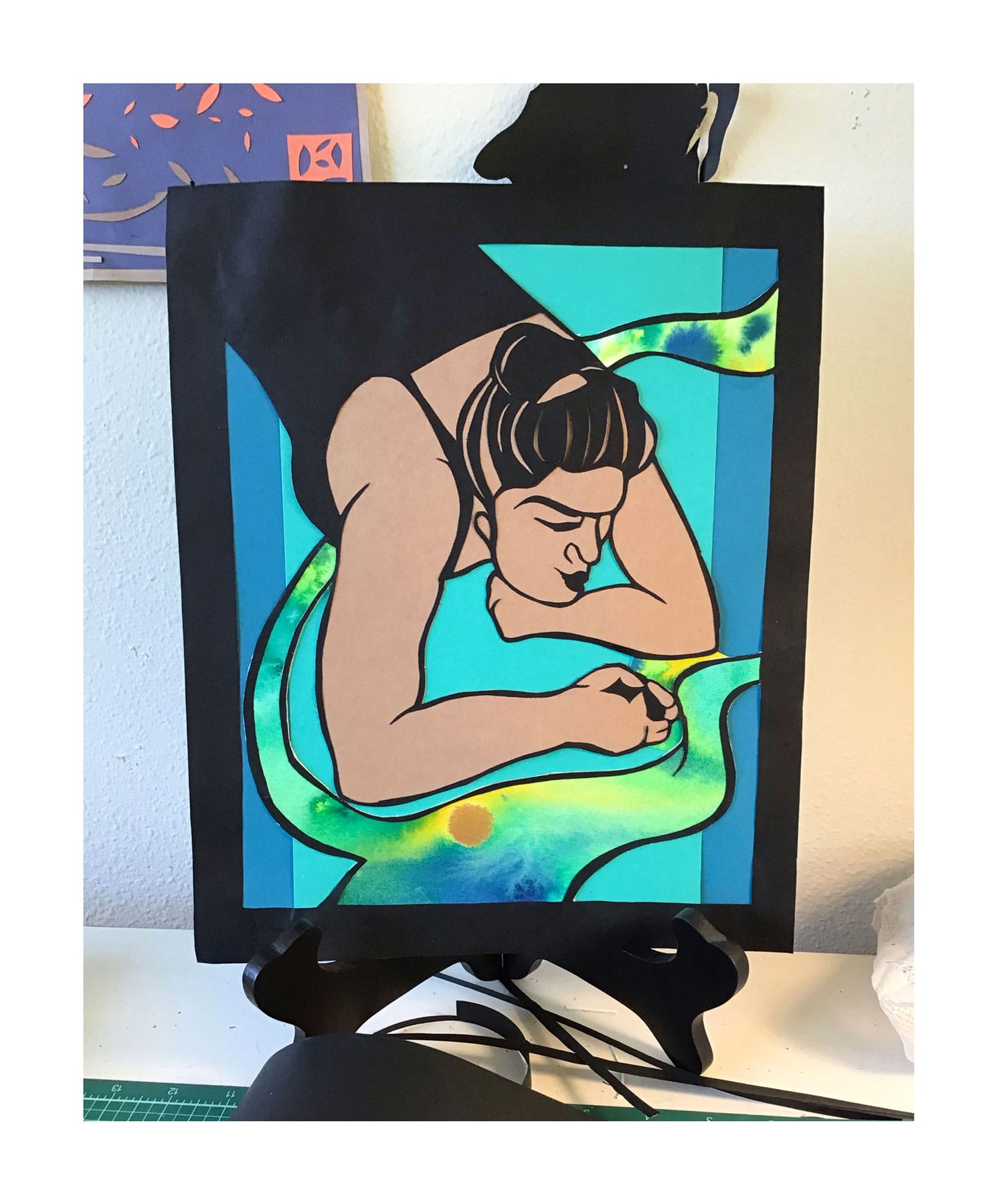
"Eventually, I landed on the image of a protagonist, creating. She is surrounded by inspiration, it might be her ancestors, her imagination, her life experience, her community her identity or her own hope for the future. The ribbon that comes from her tool is one of my papers. It represents a mixture of social cultural and historical elements. It is made from one of the papers I made during the previous week and represents the protagonist’s ability to draw from the factors that surround her in order to create her own story."